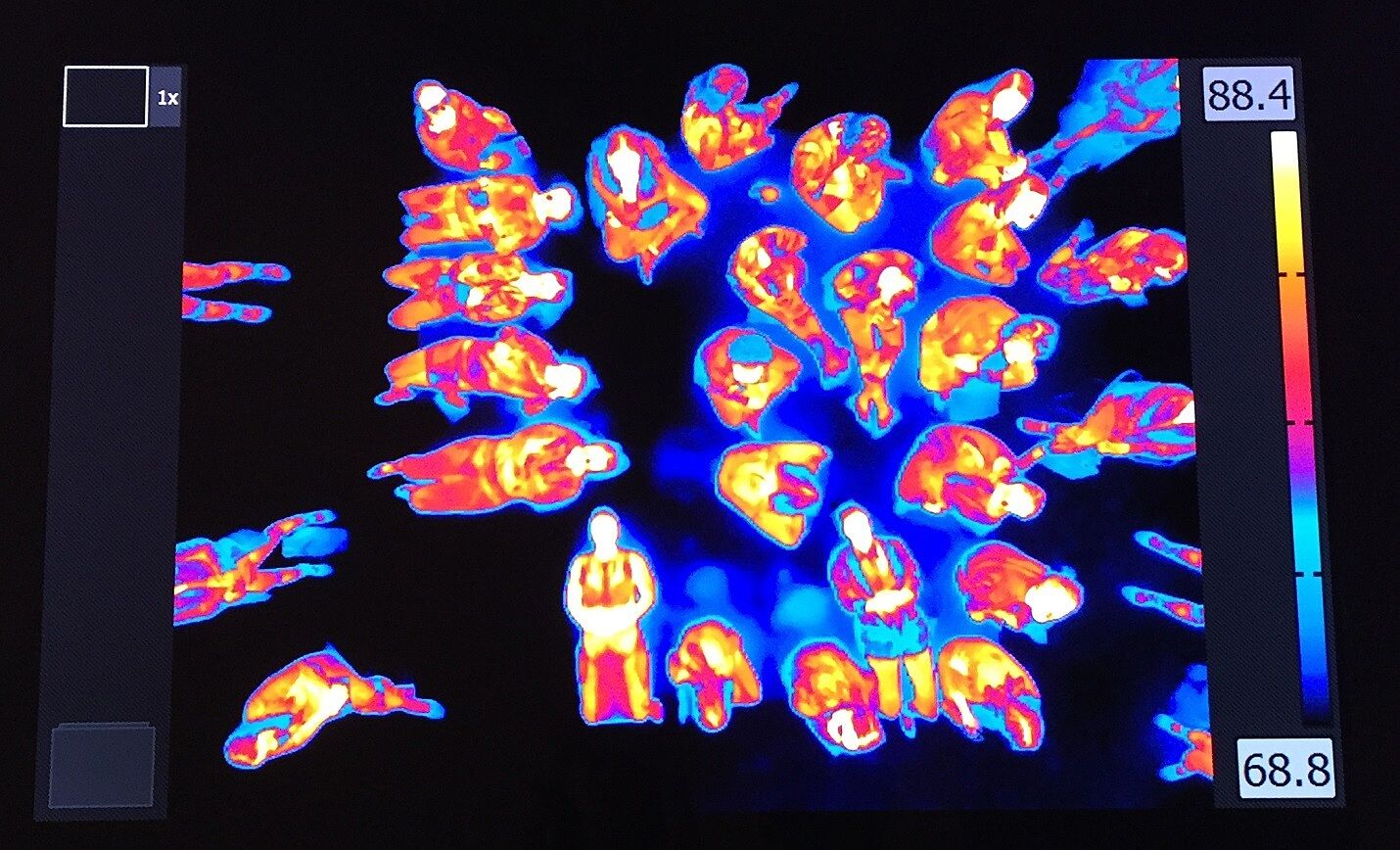Surveillance Selfies
Take pictures when under surveillance
Laura Poitras’s installation, Bed Down Location, 2016, is a projection of the night skies over Yemen, Somalia, and Pakistan—countries where the U.S. military conducts “targeted killings” using unmanned aircraft. The work also includes footage from Creech Air Force Base in Nevada, where the military tests and flies drones. The video is shown on the ceiling of the gallery space, and a raised platform invites visitors to lay back and gaze at the skies where the drone wars are conducted. The title of the work refers to the military term denoting where a targeted person sleeps.
In the final gallery, the exhibition returns to Bed Down Location with Last Seen, 2016. On one monitor, visitors can see the thermal imprints of their bodies as they moved through or lay down on the “bed” in the installation. Another monitor lists wifi signals from visitors’ personal devices. By surveilling visitors in the exhibition itself, Poitras offers us the experience of seeing ourselves being watched and an anxious reminder that surveillance has become ubiquitous: our bodies and our metadata are vulnerable to tracking when we least expect it. Whether in the context of the “war on terror” or the everyday use of social media platforms, our actions are increasingly monitored and transformed into data by governmental and corporate interests, the use of which is rarely transparent.
a. After you and your students have seen the exhibition, discuss the experience of Bed Down Location and what students think of Last Seen, 2016 in the last gallery. How did students respond to the imprints of their bodies recorded by a thermal camera while they were in the installation? Did the wifi sniffer pick up anything from their digital devices? What were their reactions to seeing themselves and their devices surveilled? Ask students to describe their reactions in one word and write their responses on a “word wall.” View and discuss students’ responses. Did they expect to be watched? If so, in what ways?
Over the course of a week, ask your students to take a picture with their phones or a camera to document where and when they notice themselves under surveillance. Have students print the pictures and draw a map of the places they were surveilled, including stores, school, and online.
Ask students to present and discuss their surveillance selfies. How often are they being watched? In what contexts?

